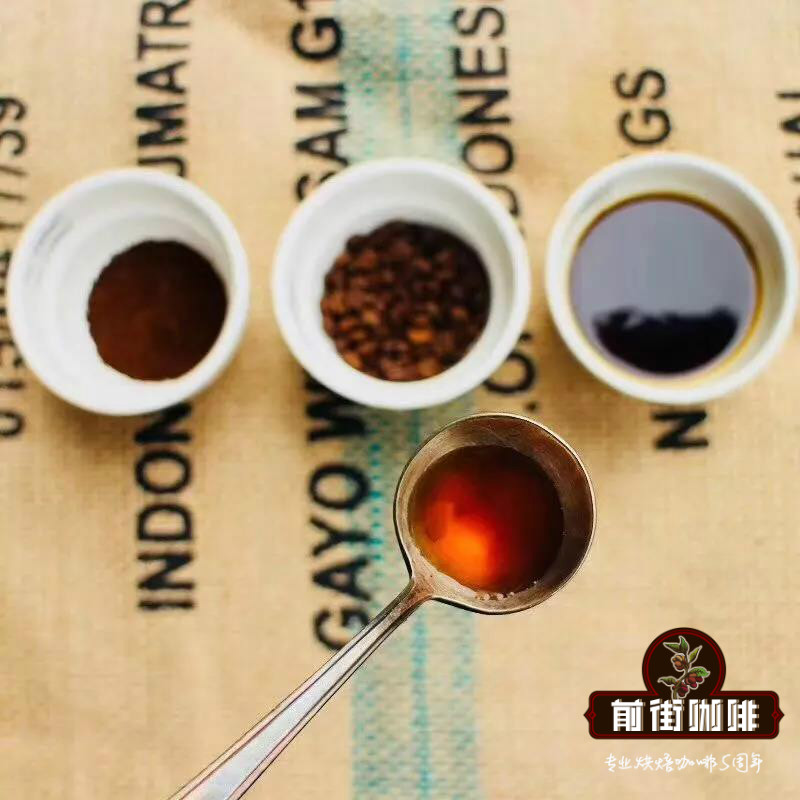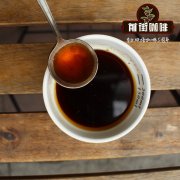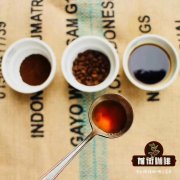Flavor characteristics of Kenyan Kagumayini washed AA Coffee double washing method

Professional coffee knowledge exchange more coffee bean information please follow the coffee workshop (Wechat official account cafe_style)
Kenya Kagumayini washes AA
Country: Kenya
Processing plant: Kamacharia cooperative
Producing area: Murang (Murangka)
Variety: SL28&SL34
Treatment: washing
Altitude: 1650 m
Grade: AA
Flavor: small tomato, plum, black plum, sweet almond
According to the Kenya Coffee Association, the Murong coffee producing area is the fourth largest coffee county in the country, followed by Zimub, Kiriniye and Yeli. In Murangka, 65% of coffee production comes from small farmers, who gather around cooperatives, where they pick the ripe coffee fruit and send it to a washing station for centralized treatment, where the coffee fruit is peeled and placed to ferment overnight. The water is washed on an elevated bed to dry in the sun, and the dried coffee with parchment is sent to another drying station for further treatment and grading.
Kagumayini belongs to the Kamacharia Cooperative, which has three washing stations: Riakiberu, Wahundura and Karugio, which has a total of 4000 registered small farmers.
Niya coffee beans are basically treated by water washing. generally speaking, the coffee flavor is the purest, the miscellaneous flavor is the lowest, and the fruit aroma and sour taste are also the best. What is more commendable is that Kenya has a more special treatment: the "double washing method".
The so-called "double washing method" refers to the coffee beans are washed twice and fermented twice.
The fermentation process is as follows:
Fresh fruit flotation → de-pulp → fermentation tank upper fermentation night → water washing → with shell beans into the bottom fermentation tank for 36 hours, → water washing → water for 12 hours → sun.
The double fermentation washing tank has two layers, high and low, which are used for the first and second washing respectively. Harvest the coffee fruit, remove the defective fruit in the middle, remove the peel, pour it into the upper fermentation tank for fermentation, or directly use dry body fermentation that does not enter the pool.
The time required for the fermentation process is related to many factors, the hotter the environment, the faster the fermentation, but after a period of fermentation, most of the pectin is removed by washing, and then put down the clean pool for secondary fermentation. circulating water needs to be changed every few hours during fermentation to prevent coffee beans from smelling.
It will take 36 hours to wash the coffee beans again with water, remove the residual pectin and add washing, but this is not over yet. If the coffee beans are soaked in fermentation for too long, the negative flavor will increase. Once more than 36-72 hours, there may be excessive fermentation, and fatty acids will be produced, resulting in the taste of coffee over-sour, so the time of this process is about 12 hours, that is to say, Washing in Kenya takes at least 48 hours, or even 72 hours.
Kenya's unique double fermentation water washing method will improve the original acidity and cleanliness, because in the fermentation process of washing treatment, the acetic acid concentration of coffee beans will be increased, thus improving the flavor of coffee. The impressive clean and exciting flavor of Kenyan coffee benefits from the coffee treatment in addition to the growing environment of the coffee beans themselves.
Important Notice :
前街咖啡 FrontStreet Coffee has moved to new addredd:
FrontStreet Coffee Address: 315,Donghua East Road,GuangZhou
Tel:020 38364473
- Prev

Kenya BlackBerry Muse Nyeri Neri production area K72 washing fermentation treatment of coffee beans characteristics story
Professional coffee knowledge exchange more coffee bean information please follow the coffee workshop (Wechat official account cafe_style Kenya BlackBerry Muse Grade: Kenya AA production area: Nyeri planting altitude: 1820 planting Variety: SL28/SL34, treatment: K72 washing fermentation Flavor: BlackBerry, Lactic Acid, Brown Sugar, Berry BlackBerry Muse picked in Nyeri Neri region, Kenya, fresh
- Next

Introduction to Huilan Shenshan Manor of Huilan, Colombia
Professional coffee knowledge exchange more coffee bean information please follow the coffee workshop (Wechat official account cafe_style) Columbia Huilan Shenshui Rose Summer country: Columbia Manor: Huila Shenshan production area: Huilan Variety: rose Summer treatment: washing altitude: 1690 Flavor: lemon, Orange, Coffee Blossom, Strawberry Jam Shenshan Manor is managed by Rodrigo San-chez
Related
- Detailed explanation of Jadeite planting Land in Panamanian Jadeite Manor introduction to the grading system of Jadeite competitive bidding, Red bid, Green bid and Rose Summer
- Story of Coffee planting in Brenka region of Costa Rica Stonehenge Manor anaerobic heavy honey treatment of flavor mouth
- What's on the barrel of Blue Mountain Coffee beans?
- Can American coffee also pull flowers? How to use hot American style to pull out a good-looking pattern?
- Can you make a cold extract with coffee beans? What is the right proportion for cold-extracted coffee formula?
- Indonesian PWN Gold Mandrine Coffee Origin Features Flavor How to Chong? Mandolin coffee is American.
- A brief introduction to the flavor characteristics of Brazilian yellow bourbon coffee beans
- What is the effect of different water quality on the flavor of cold-extracted coffee? What kind of water is best for brewing coffee?
- Why do you think of Rose Summer whenever you mention Panamanian coffee?
- Introduction to the characteristics of authentic blue mountain coffee bean producing areas? What is the CIB Coffee Authority in Jamaica?

